
It is Siadas, 21st of the Month of Cinder, in the year 96

Kingdoms of the Ancient Dwarves



Paragon Mesha
Paragon Bartan
Paragon Bugor

The Ancient Dwarves are the collection of Dwarven holds that were mainly indifferent in centuries gone to the world around them, most of them have now opened up to trade with the Elves hundreds of years before the landfall of Humanity.
Their name, Ancient Dwarves, originates from the Custodes as they referred to their old kin following their exile. The phrase was used by way to highlight the stubbornness and backwards thinking of the main cohort to oust them - The Venerable Four, the oldest kingdoms.
These old Dwarves still maintain their neutrality when it comes to the machinations of Elven Houses or Human powers—preferring to open up trade to all those willing and tell all who would listen to the Great Sagas of Old over the ‘good stuff’.
"Want some of the good stuff?"
- Every Dwarf at some point in their life


Play As...
Ancient Dwarves

General Characteristic
Race
Dwarf
Language
Command, Dwarven
Height
146cm - 162cm (4'8 - 5'3)
Hair Colours
Brunettes, Blondes, Darker Browns, Ginger
Eye Colours
Hazels, Greens, Browns, some Blues
Skin Tone
Pale, Greying, Tanned
Ethos
Communal
Naming Convention
Dwarven (Dragon Age, Lord of The Rings)
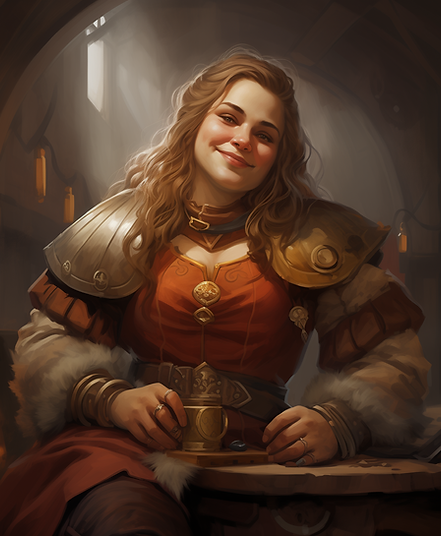

Ancient Kingdom Rundown
Themes
Collection of Kingdom Holds, Storytellers, Poets, Jolly, Pubs, Taverns, Good Laugh & Friendly
Aesthetics
In General - Tolkien / Dragon Age Dwarven Holds.
Ort-Agadum - Gem Decorated Stoneworks.
Ort-Sherandum - Bronze Armour Colouring, Green Fabric, Utilitarian.
Ort-Yarendum - Grand Structures, Gold Artistry
Unique Aspects
Storytellers, ‘Good Guys’, Boisterous, 'Lads'

General Attitudes Towards

Attitude Scale:
Allied
Friendly
Cordial
Neutral
Unfavourable
Antagonistic
War

Gallia:
Neutral

Dumanon:
Unfavourable

Custodes:
Unfavourable

Azuchi:
Neutral

Daurans:
Cordial

Asturias:
Unfavourable

Great Houses:
Neutral

Banen’Rhûn:
Unfavourable

Dynasty:
Cordial

Sasanshahr:
Friendly

Komanali:
Neutral

Amu-Tep:
Allied

Turak:
Allied

Ancient Dwarves and Aether Users:
Like many others, the Ancient Dwarves treat the use of Aether with caution and some suspicion. Aether is rare amongst the Dwarves, and rarer still do thoughts of the Renegades escape their minds when encountering Aether users. This apprehension is often tempered by the Paragons being known to have similar powers, though the imagery of Boegin and Fik remains strong.
Ancient Dwarves and Devourers:
The Ancient Dwarves have very little experience with the phenomenon called Devourers. Those that they have experienced are often regarded as being Scourge-like creatures and subsequently treated as such. The true nature of these evils is unknown to the Dwarves and their exposure to them seldom allows a greater understanding of them.

When Playing...
Ancient Dwarves are unlike their more belligerent cousins in the Custodes. They have less reason to take up arms and do not make warfare their primary profession. This is not to say they lack warriors or excellent smiths, of which they have both, but that their culture is more varied.
The importance for the individual Ancient Dwarf is their personal saga or story. Often they will shape their personality to exaggerate certain aspects which they want to be remembered for, or ambitiously pursue the old tradition of crafting their own style or flavour of alcohol or food. Some would even pray to their Paragon ancestors, both personal and universal, for glory to be remembered and perhaps enter into the halls of Paragons themselves.
What will you do when you play an Ancient Dwarf? Will you fight for glory and a name to be remembered? Will you force any unsuspecting Elf or Human to try the ‘good stuff’ and get them blind drunk? Or will you forge a different path that will become the envy of others?
Along with the Amura and the Turak, the Kingdoms of The Ancient Dwarves are founding members of The League.
"Ancestors favour you."
- A frequent form of saying goodbye, or good luck

The History of The Ancient Dwarves

The Grand Old Dwarves trace their history many millennia back, recorded in their oldest kingdoms as grand scripture carved into the great stone halls of ancient royal bloodlines. The tale it tells is of a short, rotund, strong and greatly bearded people being led by the First Paragon to a lonely mountain where the first dwarf mountain hold was built.
The story of why Dwarves were being led to the mountain is intertwined with their birth. That the first Dwarves were rocks and boulders mined from the great mountain that yearned to return home. And the mightiest boulder among them, the Great Wanderer Jurick, had to lead his kin home through sound. As they had no feet, hands or eyes. But they could feel the vibrations in the earth.
This is where the concept of ‘living rock’ originates, and where the birth of the stone singing practice was born. The Stone Singing ritual is performed before and during any dig or ritual to ensure that no rocks that are to be mined are living. It is only rumoured that living rocks are found, typically by isolated holds about other holds who say the same about them, thus no proof has ever come to light.

Then, the ‘what came after’ was a monumental event in Dwarven history that still stings to this day. The death of not one, but the three kings of the Venerable Kingdoms while under the watchful guard of their protectors. This tragedy brought into question the effectiveness of the Custodes in their sole duty.
However, it did not end there, rumours spread through the holds at a rapid pace and were further cemented by detractors who disfavoured the Custodes. Despite attempts by the Royal Guards to curb the tide, and even monarchs that still favoured them, the collective decision was made to exile the Custodes out of fear they were compromised and posed a risk to the stability of all settlements.

As Elven expansion crossed the continent above, Dwarven expansion crossed the continent below. Carving out Great Roads to join the far-flung holds through an underground highway system that took centuries or millennia to complete depending on the distance. These Great Roads typically only connected the Old Kingdoms first, and digging for splitter holds was of secondary to no importance.
The Great Roads connected the Dwarven Kingdoms like no other road network could and through their diligence and ingenuity, they were rewarded with the emergence of The Scourge.
A malicious and vile collection of beasts that seemed to have been dormant deep under the continent, recently awoken by the Dwarves. Fortunately, the Dwarves were well accustomed to the conditions of the deep, unfortunately, their most effective fighting force, the Custodes, had been exiled. And the brutality of war against these creatures bore deep scars.
The culling of the Scourge outbreaks became an increasingly routine procedure between the wars fought against them. Every once in a while, a surge of these creatures created a near-catastrophic event for the Ancient Dwarves.


Throughout most of Dwarven history, they have preferred to build into mountains, highlands or decently hilly terrain before they began digging deeper into the homes they had already made. As these settlements flourished, distinguished individuals rose to power in turn and became Paragons of the settlements. Officially recognised as an answer to all Dwarves who live there.
These holds grew in size and influence, as well as in their rivalry towards one another. Though never as drastic as the Elves or Humans, the Dwarven Holds were comparatively united. Nothing would establish this more than the cadre of Kingsguard, elite Dwarven warriors who all swore the same oath to protect their kings and queens. These companies were established by Paragon Skoteg, who is shunned by the Ancient Dwarves for what came after but is still a revered ancestor to the Custodes.
Ort, meaning 'old' or 'venerable', was a title given to only four Dwarven cities, each giving the name to the greatest kingdoms: Ort-Agadum, Ort-Sherandum, and Ort-Yarendum. The last, Ort-Dendardum, was destroyed by The Scourge.
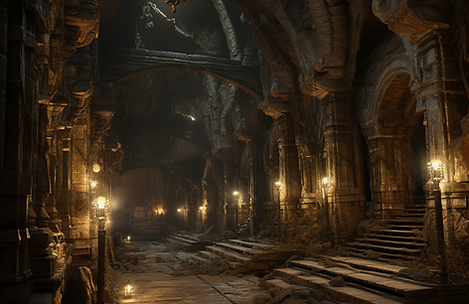

Scourge Beast

The last one, now over three centuries ago, forced the Ancient Dwarves to come to the collective conclusion to open up more to the world above. To trade, grow strong, give their kind a place to retreat and, more importantly, recruit potential allies for the next Scourge outbreak. - They were eventually met with a plague brought across the ocean by humanity, though their tougher bodies meant only the ill or infirm were at risk of death. Their losses were nothing compared to the Elves.
More recently, the Ancient Dwarves have opened up a lucrative trade arrangement with Sasanshahr which has led to a great influx of spices and dyes bringing about a new fashion and culinary revolution to the holds exposed to such benefits. The array of ales and spirits being experimented with, along with the rapidly developing fashion trends has taken prerogative over many holds.
"To the establishment?"
- A common phrase that is the Dwarven way of asking to go to the local pub


Ancient Dwarves:
Civilization & Politics

The Ancient Dwarven Kingdoms have developed in parallel to the technology of the Elves, without having much interaction with them. Though the Ancient Dwarves excel in construction, mining and metallurgy, they fall behind their top-wandering neighbours in agriculture, medicine, woodworking, culinary marvels, textiles and aetheric potential.
Trading with the Elves initially brought about a surge of innovations into Dwarven society that it once lacked and has opened their culture to new experiences and encouraged more of their kind to settle top-side. This has caused some issues with the Elves that might have been more local to the region, though the Ancient Dwarves applied their greatest charms and diplomats and have avoided conflict for the most part.


Dwarven Hierarchy
Ancient Dwarven hierarchy was rather simple and had stood the test of time for many generations. At the top, was the Great Council, a collection of Dwarven Monarchs which voted on the greater good of the Dwarven people.
Kings / Queens
Dwarven Kings and Queens made up the Great Council, and they were invited to join the council because they ruled over various Dwarven holds that made up the majority of their civilisation.
Hold Lords/Lady
These 'Sworn' were given rulership over a hold to rule in the stead of a King or Queen to which they owned allegiance. Although the title could be hereditary, it often was returned to the ruling Monarch for them to distribute the title once more to the best person for the job, ideally.
Sworn Lords/Lady
The Sworn Lords and Ladies are as much an eligibility as they are a formal hierarchal title. Often the title will be held by influential individuals, either from potent families or due to particular fame and skill, who serve their Hold Lord in some official capacity. There is no strict limit to the amount of Sworn Lords that can be raised from the Oathsworn.
Oathsworn
The Sworn, or Oathsworn, made up a variety of roles within Dwarven holds. Essentially this was anyone who had sworn loyalty to the specific King or Queen, Lord, their families or the hold specifically. It is seen as a great honour to be offered to become a Sworn, and through becoming one it grants a greater degree of dignity and respect associated with the individual's name.
The Unsworn
The Unsworn were those who had not sworn their loyalty to a Monarch, Lord, or any other. These made up the majority of the population of the dwarves. There was generally no stigma to being an Unsworn unless they aimed to make something more of themselves. A Dwarf being famous and Unsworn is unheard of.
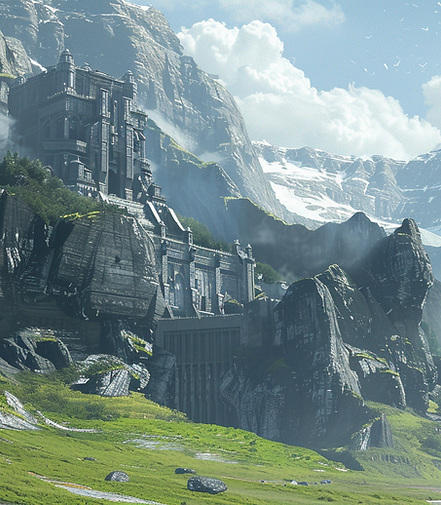

The Venerable Three
Formerly the Venerable Four until Ort-Dendardum was wiped out, the term is now used about the three oldest Dwarven Kingdoms.
Ort-Agadum, The Kingdom of Gems, lays claim to the oldest of the olds and stands above the rest as being the home of the most Paragons of the Dwarves.
Ort-Sherandum, The Kingdom of Bronze, The Scourge-Slayers hold, and the birthplace of Renegade Skoteg. Sherendum has a mixed reputation but knows no equal in the defence of the Kingdoms.
Ort-Yarendum, The Kingdom of Gold, where fortune favours every Dwarf. The youngest of the old Kingdoms, but by far the wealthiest. Famed throughout the Kingdoms for its artisans and surprising ability to find rare metals and strike 'gold'.
These Kingdoms make up the core of the Dwarven Council and are cemented in their status with the power, influence and wealth under their belt.
"This is the hardest shite I've come across!"
- A dwarf remarking about the strength of Runic metal


Ancient Dwarves:
Faith

The Ancient Dwarves practise a form of ancestral worship that is divided into multiple different kinds.
The first and most well-known among dwarven societies are known simply as ‘Paragons’. These individuals have done something so great and note-worthy in their time that songs and parables are created in honour of their lives. They are widely prayed to for fortune and favour in the endeavours that are associated with them.
There are then Hold Paragons, ancestors of specific settlements that are venerated for their actions in life by most Dwarves of a hold. Sometimes they can be shared between nearby holds, depending on how popular they were in life.
Lastly, there are Family Paragons. True ancestors are called upon by family members for guidance and favour in times of personal struggle or toil.

"Come, come, come! You'll love it."
- A Dwarf forcing an unsuspecting Sasanshahr merchant into the local Establishment


Ancient Dwarves:
Norms & Culture


Ancient Dwarven culture is quite varied as it encompasses different Kingdoms and specific Holds. Individuality is at the core of Ancient Dwarf identity, despite the ruling council being more collectively minded and their decisions accepted for the betterment of them all. These dwarves tend to distinguish themselves in some way, usually in feats worthy of Saga, strong personalities, or what has spawned particularly fierce rivalries: Ale and food. Ales can differ in their craft from family to family, and it is a competition that knows no class limit. Even the poorest among the Dwarves will have some personal ale-making recipes somewhere.


Food has likewise become a large part of Dwarven culture, and the introduction of new foodstuffs from the top side and more recently from the Old World has created another culinary revolution as rival chefs try to out-compete one another.
When these rivalries are not narrowed down to the individual, they see competition between larger companies that excel in branding and try to prostrate themselves as the best. It is difficult to determine which is the best, as great quality is the minimum level of entry to establish the company in the first place. Legally. In most holds.

Three of the greatest Dwarven traditions collide in the establishments, bars and pubs, of their great holds. It is here that ale, food and sagas are allowed to flourish in the warm welcoming and boisterous environment of these establishments.
With a great deal of consumption and merriment, singing often soon follows. And with singing comes the great storytellers who either sing a great saga with patrons joining in or dazzle them with stories. - The Ancient Dwarves are generally eager to throw non-Dwarven travellers into these environments, encouraging them to enjoy what they see as some of the best parts of their culture regardless of their personal preference.
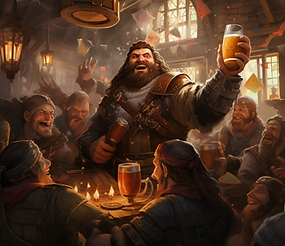


Most Ancient Dwarven Holds are built on the side of mountains or highlands, certainly, the greatest of them are very old and occupy resource-rich locations dotted around the continent. The abundance of stone has led to the Dwarves shaping great works of art from what would otherwise be used in building or discarded until a use was found.
In more recent times, Ancient Dwarf populations have been making more holds and settlements further from mountains and highlands, instead prioritising land which can be used to cultivate various crops to keep up with the demand from their kin. And to also escape the blight of the Scourge.

Kingdom of Agadum
The oldest of the Venerable Three - Ort-Agadum - The Jewelled City, was built upon a sizeable deposit of gems which has fueled many cultural aspects of the people. It is home to the most devout believers in the virtues of the Paragons and likewise the most hostile to those who follow the path of Renegades.
It is customary in Agadum for each member of the Kingdom to receive a Jurik Stone. These gems are ceremonially blessed by Agadum-Sworn priests and then given at random in the coming-of-age ceremonies held once a year across the kingdom.
The Jurik Stones vary in their shape, colour and meaning. Generally, the rarer the stone the more fortuitous Jurik looks upon the individual, and only since the exiling of the Custodes has a black-coloured stone begun to be seen as a bad omen.
Ort-Agadum is the birthplace of Paragons Barten, Mesha and Bugor.


Kingdom of Sherandum
Ort-Sherandum, The City of Bronze, is best known for Dwarves from these halls having a strong sense of pride in their home. More so than would be considered normal for a Dwarf. The Kingdom famously houses the Bronze Helms, a company of Scourge-slayers who match the brutality of the scourge with their ferocity.
The City of Bronze is very uniform in its architecture with consistent bronze trims through the stonework and extraordinary art carved through an intermingling of stone and bronze.
Sherandum often sees the highest rate of activity from the Scourge in and around its Kingdom. The people of Sherendum are all accustomed to the use of some weapons just as a means of protection against any wild bands on a raid.
Ort-Sherandum is the birthplace of Paragon Olenna and is stained by being the birthplace of Renegade Skoteg and the Custodes.
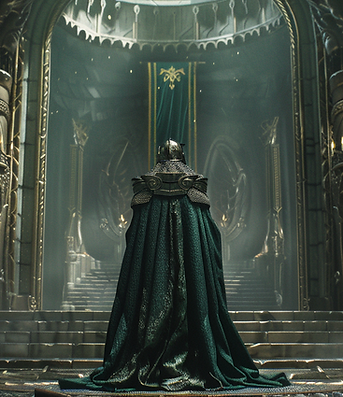

Kingdom of Yarendum
Ort-Yarendum, The City of Gold, is known for sitting upon rich deposits of gold and silver all the while trading with the Elves before the council's decision to 'open up' to the outside world.
The Kingdom of Yarendum benefitted greatly from this move, enriching itself in a great torrent of trade as it became a prime location for all Dwarven goods for Elves and later Humans. It enjoys a prosperous relationship with the Elven House of Kitzra, and maintains its own reputation as being the most 'forward thinking' of the Old Kingdoms.
The advocacy in the formation of The League mainly came from Yarendum, a means to deepen trading relations with more peaceable partners. The Bloc aims to protect trade from potential Custodes attacks and against any other power that would seek to hinder it.
Ort-Yarendum is the birthplace of Paragon Zurdahn and Renegade Fik.
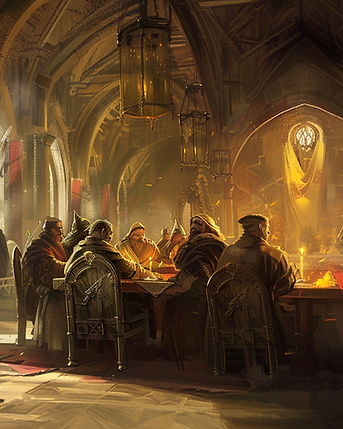

Kingdom of Dendardum
Ort-Dendardum, The Lost City. The greatest defeat in Dwarven history was when this city fell to the tide of Scourge and was purged of living souls over some weeks. The fight to defend the city was brutal but ultimately failed.
The Kingdom used to be known as The City of Iron. It was a cultural heart of artisans in Dwarven culture and its loss centuries ago still causes heartache today. Few Dwarves remain that can say they're Children of Dendardum, many of whom have joined the ranks of the Bronze Helms to resist the blight of the Scourge.
Many attempts have been made to recolonise the ruins of the city, but each attempt has met with fierce raiding from Scourge who reside in the city and around it. Due to the vastness of the city, it has been difficult to secure it.
Ort-Dendardum is the birthplace of Paragon Tan and Renegade Boegin. Some claim that the destruction of the city was Boegin's last laugh against her home.
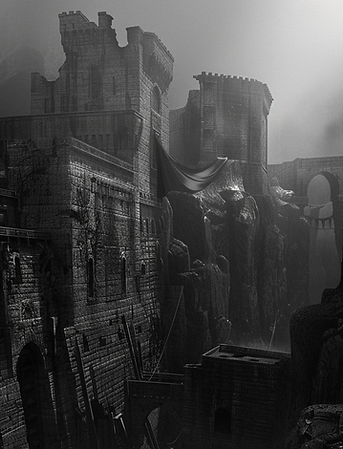


Marriage, Social Status & Sexuality
Marriage as a concept is not common among most Dwarves, instead, it is something that is often reserved for Kings, Queens and Lords for various machinations of the higher society. Marriage for the nobility is done in terms of a man and a woman, to unite houses or interests and forge stronger bonds.
Commoners do not get married, and will often live with whoever they wish to. Even in households with their life-long friends and their families. Most commonly they will move into either of the spouse's family homes, typically whichever has the most room.
The Ancient Dwarven approach to sexuality can be categorised best as ‘I don’t care’. More specifically what is done in private, stays in private. Generally, Dwarves do not flaunt their preferences outside the rowdy nights drinking at the local establishments where it is generally accepted that ‘Anything can happen’ and legends are born.
"Somewhere on the cliffs of legend..."
- A common opening for a Dwarven Storyteller


Ancient Dwarves:
Reputation & Interactions

For much of their history, The Ancient Dwarves have been the more isolationist of the two main groups, the other being the exiled Custodes. Their desire for isolation has slowly dissipated over the centuries leading to various technological and cultural revolutions which have given their kind a general reputation of innovators, engineers and midas touched.
The opening up of the Ancient Dwarven holds has also invited many travellers to come and experience their culture for themselves, often trading caravans will be ‘forced’ to spend the evening in an establishment enjoying the best food and drink they have to offer, and getting blackout drunk in the process.

With Humans
Generally speaking, the Ancient Dwarves bear little ill-will towards humanity even despite the war and plague that was brought with them. Preferring instead to openly trade where possible.
This changes with Asturias and Dumanon, who are treated more cautiously due to their reputations and rumours surrounding their conquests. On the other side, the Ancient Dwarves tend to adore Sasanshahr, particularly for the exotic and luxury goods they bring. - This extends to the Daurans as well, despite the problems at home.
Remnants of The Dynasty have also found sanctuary among the Dwarves and in turn have been eager to repay their kindness.


With Amura
Not many Dwarves have met an Amura, and fewer still could begin to fathom ‘what they are all about’.
This general unawareness is being slowly rectified by the creation of The League, in which both the Ancient Dwarves and Amura are partners.

With Elves
The relationship with the Elves has been both prosperous and strained and often depends on the specific House or House representative that is encountered and dealt with to determine how fruitful the relationship becomes. In the best-case situation, the opening up of the dwarven holds has brought trade and fortune to both groups. In others, the Dwarves have become an invasive nuisance, expelled from Elven lands and the relations have soured so much that battles have been fought.

With Banen’Rhûn
The Ancient Dwarves have only known one kind more ferocious than the mindless beasts called the Scourge, that is the Banen'Rhûn.
Further flung Dwarven holds have been victim to infrequent attacks from the Banen’Rhûn. Although the success varies greatly, the attempts are enough to bias nearly all Dwarves against them, even Ort-Yarendum.

With Custodes
The Custodes still bear the mark of expulsion, of traitors and untouchables. It is still generally accepted in Dwarven society that the Custodes were in the wrong, the idea being extremely pervasive despite arguments against it from when they were exiled to now.
Generally, both groups are not accustomed to the company of each other anymore.

With Turak
A long-standing relationship of trade and cultural exchange has existed between the Ancient Dwarves and the Turak. A great deal of respect resonates between the two people. - It comes as no surprise that they both form part of The League.
Author: Hokan
Page Created by: Hokan
